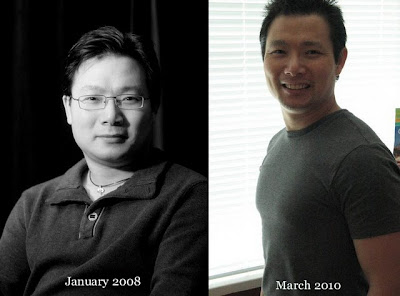I could have titled this post many different ways. I settled on a verbose and inelegant title for the sake of inclusion.
Gary Taubes is a science reporter. Driven by curiosity, he asked questions about diet, nutrition and health without preconceived ideas and without the bias of being funded by interest groups. His findings contained in his resulting book,
Good Calories, Bad Calories was nothing less than a damning indictment of shoddy science. It launched a paradigm shift in the understanding of metabolism and obesity. He has since published a new book called,
Why We get Fat which makes the information found in his previous book a little more accessible to the average reader.
ABC News published an excerpt from Taubes'
Good Calories, Bad Calories book with the following points (the parts which are underlined are my emphasis):
1.
Dietary fat, whether saturated or not, is not a cause of obesity, heart disease, or any other chronic disease of civilization.
2. The problem is the carbohydrates in the diet, their effect on insulin secretion, and thus the
hormonal regulation of homeostasis of the entire harmonic ensemble of the human body. The more easily digestible and refined the carbohydrates, the greater the effect on our health, weight, and well-being.
3. Sugars sucrose and high-fructose corn syrup specifically are particularly harmful, probably because the combination of fructose and glucose
simultaneously elevates insulin levels while overloading the liver with carbohydrates.
4. Through their direct effect on insulin and blood sugar, refined carbohydrates, starches, and sugars
are the dietary cause of coronary heart disease and diabetes. They are the most likely dietary causes of cancer, Alzheimer's disease, and the other chronic diseases of civilization.
5. Obesity
is a disorder of excess fat accumulation,
not overeating, and
not sedentary behavior.
6.
Consuming excess calories does not cause us to grow fatter, any more than it causes a child to grow taller. Expending more energy than we consume does not lead to long-term weight loss; it leads to hunger.
7. Fattening and obesity are
caused by an imbalanced disequilibrium in the hormonal regulation of adipose tissue and fat metabolism. Fat synthesis and storage exceed the mobilization of fat from the adipose tissue and its subsequent oxidation. We become leaner when the hormonal regulation of the fat tissue reverses this balance.
8.
Insulin is the primary regulator of fat storage. When insulin levels are elevated either chronically or after a meal we accumulate fat in our fat tissue. When insulin levels fall, we release fat from our fat tissue and use it for fuel.
9. By stimulating insulin secretion, carbohydrates make us fat and ultimately cause obesity.
The fewer carbohydrates we consume, the leaner we will be.
10. By driving fat accumulation,
carbohydrates also increase hunger and decrease the amount of energy we expend in metabolism and physical activity.
Check this link to hear
Maureen Cavanaugh from KPBS conduct an interview with Gary Taubes about weight loss.
The Paleo Diet and Atkins Diet independently arrived at the same conclusion that
insulin was the key hormone to control. Paleo approached this from an evolutionary diet perspective while Atkins targeted low blood sugar as a goal; and low glycemic index foods for the stimulation of ketosis (especially during the
induction phase). In contrast to the Dr. Bernstein Diet which severely restrict calories to less than a 1000 calories per day, the Paleo Diet and Atkins Diet typically allows you to feed until you feel full.
Taubes' ground-breaking work is one main reason why Harvey and I keep repeating on this blog that weight loss occurs in the kitchen and NOT the gym. Exercise will make you stronger and fitter.
But
if you want to lose inches around the waist and get leaner, the diet has to change. Stop eating
sugars (orange juice, apple juice, soda, pop, sports drinks),
grains (whole grains, cereal, oats, pancakes, pizza, breads, pasta, muffins, scones, etc.) and
starchy foods. When you have reached a healthy weight and are in maintenance mode, you can gradually incorporate a little tubers (potatoes, yams, etc) back into the diet. Mark Sisson's has long promoted the idea that as much as 80% of the body composition is due to what we eat.
What we eat also affects
how much we eat.
Diets that severely restrict calories will cause weight loss too. In the long term however, they are unsustainable. Who enjoys feeling perpetually underfed? With the emphasis on whole foods, protein and healthy fats, the Paleo Diet is not only healthy, it is satisfying and sustainable.
Another option by
Ian Ayres is to commit to weight loss with the punishment of losing money if you don't achieve your goal
in the $500 Diet. The diet uses a website to create
Commitment Contracts to hold you accountable for your articulated goal. I think I have more fun eating Paleo.
Once the role of carbohydrates and what they do to the human body is understood, carbohydrate restriction makes sense. Suddenly all the reasons why we benefit from avoiding sugar and wheat; and why we should occasionally fast make sense. The pieces of the puzzle all begin to fit. Here is
how to eat Paleo.
Victor

















































